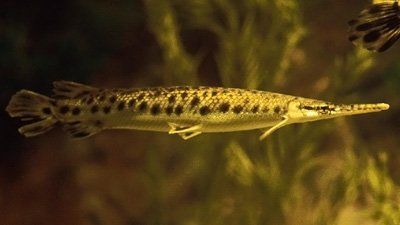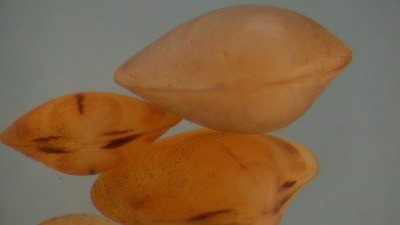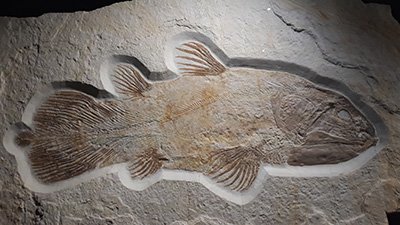
An Eel Emerges as the Next Living Fossil
Dubbed Protoanguilla palau—meaning “first eel”—this little eel is prompting a redrawing of his family tree. Discovered in western Pacific caves 35 meters deep, the eel seems like a patchwork from the eel time machine.
News Source
The U.S.-Japanese team reporting in the Proceedings of the Royal Society B writes, “In some features it is more primitive than recent eels, and in others, even more primitive than the oldest known fossil eels, suggesting that it represents a ‘living fossil’ without a known fossil record.”1
Protoanguilla palau combines many features unique to the 19 living eel families with characteristics found only in eel fossils from the Cretaceous layer. But because P. palau also possesses some “primitive” features found in neither extant nor known fossil eels, the team concludes it resembles the common ancestor of all eels.
The researchers have compared not only the morphological characteristics but also the mitochondrial DNA of P. palau with other eels. Using that information, they have determined its place on their phylogenetic tree of eels. They have used molecular clock assumptions to calculate the time other eels would have required to acquire enough mutations to diverge into various types of eels. They calculate that other eels diverged from P. palau 200 million years ago.
We do not know how many kinds of eels God originally created, but the 820 species of eels we see today (plus extinct fossil forms) descended from the original eels. Reshuffling of the original and mutated eel genes has produced eel diversity.
P. palau may well be much like an original created kind of eel. The presence of its features in so many representatives in the fossil record and the living world certainly suggest that possibility.
The assumptions underlying the molecular clock calculations, however, remain faulty. Molecular clock interpretations depend not only upon a certainty of common ancestry but also upon assumptions about mutation rates. They further depend upon the belief that the fossil record depicts a series of eels which developed from each other. Even when there is similarity within genomes, common descent is unproven as the Creator could well employ the same genes in more than one created kind. Even though the eels are still eels, we cannot be certain which of the eels in the fossil record represent created kinds and which are varieties of eels descended from them.
Biblically we have an eyewitness account that assures us the earliest appearance of P. palau’s ancestor was about 6000 years ago. It is exciting to discover a living creature which may be similar to the original eels God created.
Further Reading
- Classifying Life
- Get Answers: Living Fossils
For More Information: Get Answers
Remember, if you see a news story that might merit some attention, let us know about it! (Note: if the story originates from the Associated Press, FOX News, MSNBC, the New York Times, or another major national media outlet, we will most likely have already heard about it.) And thanks to all of our readers who have submitted great news tips to us. If you didn’t catch all the latest News to Know, why not take a look to see what you’ve missed?
(Please note that links will take you directly to the source. Answers in Genesis is not responsible for content on the websites to which we refer. For more information, please see our Privacy Policy.)
Footnotes
- G. David Johnson et al., “A ‘Living Fossil’ Eel (Anguilliformes: Protoanguillidae, Fam. Nov.) from an Undersea Cave in Palau,” Proc. R. Soc. B 279 (August 17, 2011): 934–943, doi:10.1098/rspb.2011.1289.
Recommended Resources

Answers in Genesis is an apologetics ministry, dedicated to helping Christians defend their faith and proclaim the good news of Jesus Christ.
- Customer Service 800.778.3390
- © 2024 Answers in Genesis







